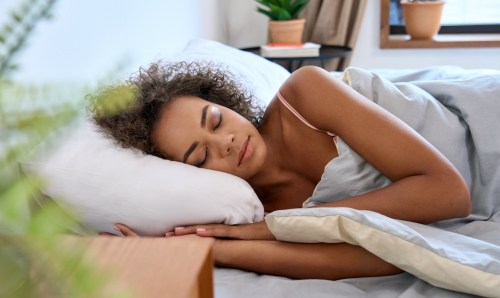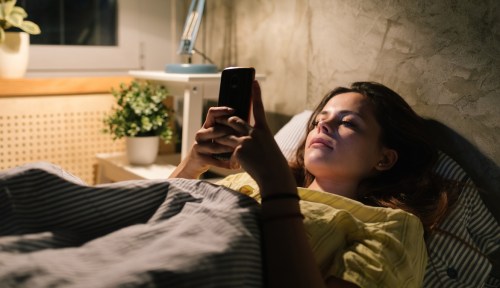Our editors independently select these products. Making a purchase through our links may earn Well+Good a commission
Physical Therapists Share a Simple Trick for Nixing Low Back Pain While Sleeping
Two physical therapists explain why you have low back pain from sleeping—and the simple hack to make tonight's rest pain-free.

Sleep positions are a heated topic. Whether you’re a side sleeper, a back sleeper, or one of those rebels who passes out on your stomach (I have questions), you’ve probably received passionate, unsolicited advice for how to optimize the physical way in which you snooze. Well, sorry to add to the chatter, but if you’re among the crowd that snoozes like a Disney princess—meaning, on your back—and you also tend to experience low back pain from sleeping, one simple trick may help you fix the issue.
Experts in This Article
Bob Schrupp is a physical therapist and the founder and owner of Therapy Network, Inc.
Brad Heineck, PT, is a physical therapist and a Certified Strengthening and Conditioning Specialist.
Physical therapists Brad Heinek, PT, and Bob Schrupp, PTrecently told CNN that many people who drift off to sleep while lying flat on their backs tend to have lower back pain by the time their alarms go off in the morning, and they have some thoughts as to why. “Your spine should be in a neutral position when you’re sleeping,” said Schrupp, meaning that it shouldn’t be rounded, extended, or twisted when you’re sleeping. Put simply, you want your spine to be as flat as possible when you’re sleeping.
You’d think sleeping flat on your back would ensure that you have a neutral spine, but it’s not true for all bodies. The height of your butt may create a gap between your lower back and your mattress. This can, in turn, lead your lumbar spine (the five lowest vertebra) to strain as it sinks down toward the mattress, per Schrupp and Heinek. As a result, you may wind up in pain.
The good news? You can very easily close this gap and save yourself from the usual “my aching back!” monologue in the a.m. “You’re going to want to fill that gap at night,” Schrupp says, in order to take the pressure off of your lower back. “We use a rolled sheet,” he says, wrapping a white, loosely rolled sheet around Heinek’s waist to demonstrate, adding that a rolled up towel can also work. There are also products you can buy that wrap around your body like a belt to provide that lower lumbar support (like the OPTP Original MacKenzie Night Roll, $40).
This advice isn’t just relevant to back sleepers, either. Even side sleepers can benefit from this support, Schrupp adds, since there might be a small gap between the side of your stomach and the mattress as well. That said, just as some bodies may experience back pain from sleeping on their back (or side or stomach, for that matter), others very well may not. If you’re sleeping on your back pain-free, you have every reason to believe that you are doing so in alignment and can snooze happily. Furthermore, if you are experiencing pain, there are a number of potential causes. Since Schrupp and Heinek’s fix won’t apply to every back-pain catalyst (and their tip isn’t inspired by a related study or research), it’s best to seek the treatment of a professional if you’re in pain in order to select the best course of action for you.
Oh hi! You look like someone who loves free workouts, discounts for cutting-edge wellness brands, and exclusive Well+Good content. Sign up for Well+, our online community of wellness insiders, and unlock your rewards instantly.
Sign Up for Our Daily Newsletter
Get all the latest in wellness, trends, food, fitness, beauty, and more delivered right to your inbox.
Got it, you've been added to our email list.










